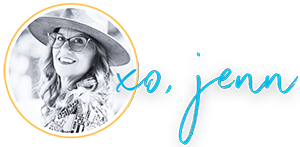Creative Adaptive Intelligence: The Synergy of Creativity and Adaptability
I’ve always believed that creativity is more than just making things. It’s a way of seeing the world, solving problems, and adapting when life throws the unexpected at us. But the missing piece for so many of us isn’t just creativity—it’s adaptability.
For years, I struggled with the idea that I needed to have everything perfectly planned, that success came from rigid strategies and predictable outcomes. But life (as it always does) had other plans. The real breakthroughs came when I allowed myself to pivot, to experiment, to embrace uncertainty, and to trust in my ability to navigate the unknown. That’s when I truly began to thrive.
One of the most profound lessons in Creative Adaptive Intelligence came to me when I was expanding my business. I had built a reputation as a photographer, pouring my passion into capturing moments and telling stories through images. But deep down, I knew I had more to offer—I wanted to help others shape their own creative paths while still nurturing my own. The challenge? Stepping beyond my familiar role behind the camera and embracing a dual identity—photographer and mentor.
I questioned whether people would take me seriously in both spaces, whether I could articulate my knowledge in a way that resonated, and whether I was stretching myself too thin. But I realized that Creative Adaptive Intelligence wasn’t about making a single choice. it was about weaving both passions together in a way that made sense for me and the people I wanted to serve.
So, I adapted. I took what I knew best, storytelling, visual communication, and human connection, and used it to build workshops, speak on stages, and develop tools that helped creatives navigate the uncertainties of their own businesses. I leaned into what I had, rather than focusing on what I lacked. And in that process, I realized that
Creative Adaptive Intelligence isn’t about having all the answers—it’s about trusting yourself to create solutions as you go.
This concept isn’t just an academic theory, it’s a reason for self empowerment. It’s the key to awareness and unlocking resilience, innovation, and confidence in our ability to create solutions, even in the face of fear and failure. I love teaching this concept because I’ve seen firsthand how once they could name it, it transformed people’s confidence and ability to lead their own paths, because the asaw how they were already doing it. Whether in my workshops, mentoring sessions, or speaking engagements, I watch people shift from feeling stuck to seeing possibilities, from hesitation to action.
It aligns deeply with the ThrivLIFE philosophy—where success isn’t about hustle or perfection, but about sustainable, intentional growth. Creative Adaptive Intelligence gives us a practical mindset shift, helping us approach challenges with curiosity instead of fear, with action instead of avoidance. It’s a tool that supports every resource I’ve built from ThrivFOCUS to my workshops and community conversations because it helps us navigate change without losing ourselves in the process.
If you’ve ever felt stuck, held back by fear, or uncertain about how to move forward, this is for you. Creative Adaptive Intelligence is what allows us to build, create, lead, and grow no matter what obstacles arise.
What is Creative Adaptive Intelligence?
Creative Adaptive Intelligence (CAI) is a concept describing the human capacity to respond to change, complexity, and uncertainty with clarity, creativity, and values-driven action. The term integrates principles of improvisation, regenerative growth, and self-leadership to offer a practical and sustainable alternative to productivity-based or performance-driven models of intelligence.
CAI is grounded in the understanding that uncertainty is not a problem to be solved but a field to be navigated. Through intentional awareness and adaptive choice-making, individuals cultivate rhythms of growth that are steady rather than rushed, aligned rather than performative.
Philosophically, CAI emphasizes the importance of composting—a metaphor for identifying and releasing patterns, habits, or expectations that no longer serve—while cultivating practices and perspectives that support resilience, creativity, and connection.
Applications of CAI can be found across personal development, leadership strategy, team culture, and creative practice. It provides a model for individuals and groups seeking to navigate modern challenges without reliance on hustle, overproduction, or optics-driven success.
Why It Matters
Fuels innovation and resilience in uncertain environments
Enhances problem-solving across industries and disciplines
Supports personal growth, leadership, and adaptability
Picture this: You’re about to give a super important virtual presentation. Your slides are polished, your lighting is perfect, and for once, your cat has agreed to nap instead of stage-diving onto your keyboard. But just as you take a deep breath and hit “Join Meeting” … your Wi-Fi goes rogue.
First, you panic. Classic response. Maybe you whisper a few words of encouragement to the router, hoping it just needed a pep talk. When that doesn’t work, you move to Plan B: aggressively unplugging and replugging every cable like you’re defusing a bomb. Still nothing. The clock is ticking, and your boss is about to think you’ve ghosted them.
Enter: Creative Adaptive Intelligence.
You hotspot your phone (because your data plan was worth every penny).
You switch from video to audio-only (who needs to see your face when your words are GOLD?).
You reframe the disaster into a joke at the start of your presentation—winning instant sympathy points from your audience.
And just like that, crisis averted. Sure, it wasn’t the perfect scenario, but adaptive intelligence isn’t about perfection—it’s about pivoting. You went from Wi-Fi meltdown to presentation superhero in under five minutes, all because you refused to let a minor apocalypse throw you off your game.
Intelligence as Adaptation: The Foundations
Key Theories:
Piaget’s Adaptation Model – Intelligence is the ability to assimilate new information and accommodate it into existing knowledge (Piaget's Theory of Cognitive Development).
Sternberg’s Triarchic Intelligence Theory – Intelligence is about adapting, selecting, and shaping real-world environments (Triarchic theory of intelligence - Wikipedia).
Guilford’s Divergent Thinking – Creativity relies on generating multiple solutions (Creative thought as blind-variation and selective-retention - PubMed).
The Neuroscience Behind Creative Adaptation
Creativity is not housed in one part of the brain.
It’s a networked process that engages multiple systems to generate, refine, and apply new ideas effectively. These three primary networks work in concert to produce creative and adaptive thinking:
Default Mode Network (DMN) – Often associated with daydreaming and spontaneous thinking, the DMN fuels imagination and mental simulations. It allows the brain to wander, make connections between unrelated ideas, and generate new possibilities—essentially serving as the starting point for creative insights.
Executive Control Network – This network governs focus, decision-making, and critical evaluation of ideas. It plays a crucial role in selecting, shaping, and refining creative thoughts, ensuring they are not just imaginative but also functional and applicable.
Salience Network – Acting as the brain’s switchboard, the Salience Network determines which ideas or stimuli deserve attention. It helps transition between the open-ended creativity of the DMN and the structured execution of the Executive Control Network, allowing individuals to toggle between brainstorming and practical implementation effectively.
Key Findings:
Highly creative individuals show stronger connectivity between these networks. Studies suggest that those who excel in creative thinking exhibit higher integration between the Default Mode Network, responsible for generating ideas, and the Executive Control Network, which filters and refines them.
This unique ability to engage both spontaneous and analytical thought processes allows for more innovative solutions and flexible problem-solving. Essentially, creative minds can efficiently toggle between free-flowing idea generation and structured evaluation, leading to higher levels of adaptability and innovation (The Creative Brain is Wired Differently - Neuroscience News).
Dopamine plays a role in motivation, curiosity, and adaptability. Dopamine, a neurotransmitter linked to reward and learning, is crucial in fostering creative adaptability. Research indicates that increased dopamine levels enhance cognitive flexibility, curiosity, and intrinsic motivation—key traits that drive innovation.
This means that people with naturally higher dopamine activity (or those who cultivate curiosity through new experiences) are more likely to embrace challenges, seek novel solutions, and stay resilient in the face of change.
Creativity isn’t just about talent—it’s also deeply influenced by our brain chemistry and how we condition ourselves to engage with the world around us (Frontiers | The Link Between Creativity, Cognition, and Creative Drives and Underlying Neural Mechanisms).
Real-World Applications
Education and Development
Encourage cross-disciplinary thinking for flexible problem-solving.
Use project-based learning to build adaptive expertise.
Teach metacognition (thinking about thinking) to refine strategies.
Business and Leadership
Agile companies embrace iteration and innovation.
Organizations thrive by fostering cognitive diversity.
Creative adaptability is essential for crisis management (Frontiers | Creative Adaptability - Times of Crisis).
Why It Matters More Than Ever
“Creative Adaptive Intelligence is more than a skill—it’s a mindset. It empowers you to reframe challenges, embrace uncertainty, and drive meaningful change.” -Jenn Ocken
I think back to when I was standing at that professional crossroads, unsure of how to integrate my roles as a photographer and a mentor. The truth is, there never would have been the “right” time—I just had to make the decision and trust that I could adapt as I went. That same adaptability helped me develop tools like ThrivFOCUS, create meaningful workshops, and guide others through the very uncertainty I once faced. I’ve seen firsthand how embracing creative adaptability allows people to find confidence in the unknown and take ownership of their path.
The most successful and fulfilled people I’ve worked with are the ones who cultivate this ability—not those with the most rigid plans, but those who trust themselves to pivot when needed.
How to Cultivate It:
Stay open to new experiences and learning. Growth happens outside of your comfort zone.
Develop cognitive flexibility. Shift between ideas and execution fluidly.
Foster curiosity, experimentation, and iteration. Trial and error is how progress happens.
In an ever-changing world, Creative Adaptive Intelligence is the key to sustainable innovation, problem-solving resilience, and long-term success.
References and Further Reading


